An introduction to benchtop dc power supplies
One of the most popular pieces of electronic test equipment, dc supplies come in many forms to suit a broad range of uses
BY B&K STAFF with DON PETERSON
B&K Precision
www.bkprecision.com
Power supplies are among the most popular pieces of electronic test equipment. This isn’t surprising, as controlled electrical energy is used in a tremendous number of ways.
The term “bench” or “benchtop power supply” is used somewhat loosely, as some versions of the power supplies discussed could be too heavy to put on a bench. Still, the nomenclature is useful, as even the heavy, high-output power supplies have lots in common with their smaller cousins. But the term “bench” is descriptive to many folks, as it conjures up a mental image of a dc power supply used on an engineer’s or technician’s bench for myriad power tasks.
Battery eliminator supplies
Battery eliminator types of supplies tend to be the least expensive. The name describes their main purpose, which is to act in place of a battery. These units are inexpensive and handy when one needs to work on battery-operated equipment, as they allow one to work on the equipment without having to find the necessary batteries.
One popular type puts out 13.8 Vdc and is intended to provide dc power to devices normally powered from an automobile battery. Typical uses are servicing CB radios and automotive stereo equipment. Their line regulation specification is usually wider than lab supplies, but this is fine, as voltages in automobiles vary substantially.
Another popular type (see Fig. 1 ) replaces various arrangements of batteries such as 9- and 12-V batteries. The only controls are an on/off switch and a switch to allow you to choose the desired output voltage.
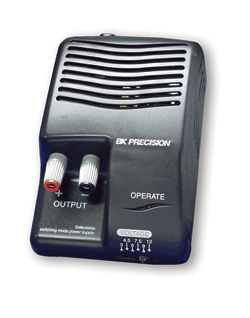
Fig. 1: The model 1514 seen here emulates 9- and 12-Vdc batteries, as well as batteries with other voltages.
Because they are true power supplies, they are designed to operate safely into a dead short continuously. Look for the banana jacks to be spaced at 0.75 in. (19 mm) so that the dual banana plug adapters used with coaxial cables can be used.
Constant-voltage supply
A slightly more complex power supply than the battery eliminator, the constant-voltage supply, as its name implies, supplies a user-adjustable constant voltage. Because they are adjustable, the supplies usually have a meter to show you the voltage the supply is set to.
The basic behavior of the supply is to maintain the set voltage regardless of the load’s resistance. The supply has a knob to adjust the output voltage. Some models may not be adjustable all the way down to 0 V and their maximum output current may be proportional to the output voltage, rather than supplying the rated current at any output voltage.
In some models, “tie” points are provided to allow monitoring output voltage with a more accurate digital meter or to allow connections to other circuits.
These types of supplies work well as battery eliminators and will also show you the current that the load is drawing.
Constant-voltage/constant-current supply
Probably the most popular type of lab power supply is a constant-voltage/constant-current supply (see Fig. 2 ). In addition to supplying constant voltage, these supplies can also supply constant current. When in constant current mode, the power supply will maintain the set current regardless of changes in the load’s resistance.
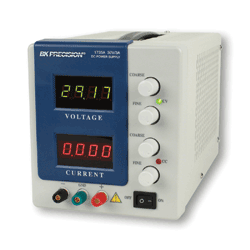
Fig. 2: A typical example of a constant-voltage/constant-current power supply is the model 1735A, which outputs one adjustable voltage, as indicated by the one set of banana jack terminals.
The arrangement of output terminals with the ground terminal between the + and – terminals is the most common, and makes connecting either terminal to ground using a metal shorting bar very convenient. This is useful when you want one of the terminals to be referenced to ground. Of course, the same thing can be done less conveniently with a piece of wire or a jumper wire with stackable banana plugs.
The supply in Fig. 2 has coarse and fine controls for both current and voltage. Some power supplies instead use 10-turn pots for adjustment. Others use thumbwheel switches or pushbutton switches. Thumbwheel and pushbutton switches are useful (if their settings are accurate) because they can eliminate the need for a meter.
These types of power supplies often have other useful features:
• Remote sensing: A high-impedance input that lets you measure the voltage at the load. The power supply then corrects for the voltage drop in the leads connecting the supply to the load.
• Master/slave connections: Various methods exist to allow you to connect power supplies from the same family in parallel or series to get higher voltages or higher currents.
• Remote programming terminal: Some power supplies have input terminals for a voltage or resistance that can be used to control the voltage or current output. Note: This is called analog programming, not digital programming using a computer.
Multiple-output supply
Multiple-output power supplies typically have two or three dc outputs, which is useful and cost effective for systems that require multiple voltages. A triple-output supply is often-used for circuit development: one output supplies 0 to 5 V, for digital logic, while the other two typically supply 0 to 20 V, which can be used with bipolar analog circuitry. Sometimes a tracking adjustment is supplied for the two 20-V supplies so that the + and 20-V supplies can be adjusted together by turning one knob.
The supply in Fig. 3 has three outputs that can be set independently either by the knob or the keypad. The channel 1 and channel 2 outputs are 30 V at 3 A, and the third channel will output 5 V at 3 A. The supply is thus capable of putting out nearly 200 W continuously. The outputs can be turned on and off independently or all at once (useful for powering up a whole printed circuit board).
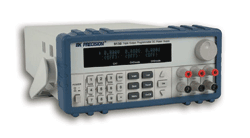
Fig. 3: The popular 9130 supplies three outputs, useful for circuit design.
The supply has a number of useful features. The outputs can be set to timed operation: after a time interval has passed, the output turns itself off. Voltage limits are settable for all channels, so your prototype electrical design can be protected from an accidental over-voltage setting. The two 30-V channels can be connected in series or parallel for higher voltage or current, respectively. There are also storage registers for saving up to 50 instrument states for easy recall later (useful for repetitive testing).
A nice feature for unattended operation is that the power supply can be set to have its output on at the last power-on settings. Thus, if it is operating a circuit and the ac power fails, the power supply will again start supplying power when the ac power comes back on.
This particular supply is also programmable via a computer, which leads to the next type of supply.
Programmable supply
Programmable power supplies are sometimes called “system” power supplies, as they are often used as part of a computer-operated system for testing or production. We’ll exclude from this discussion “programming” via external voltages or a resistance, which was used primarily before digital control became popular.
There have been numerous types of computer interfaces over the years with instrumentation. Two of the most popular have been IEEE-488, also known as GPIB (general-purpose interface bus), and RS-232 serial communications. Network interfaces (e.g., Ethernet and USB) interfaces have also been used (see Fig. 4 ). We won’t discuss the merits of the different types of interfaces here, as they are beyond the scope of this document.

Fig. 4: The XLN3640 system power supply for bench and rackmount applications with USB, GPIB, and LAN interface.
At a slightly higher level than the type of interface is the command language for the power supply. This means the set of instructions sent to the instrument over the digital interface and the information received by the computer from the instrument. Three categories you will see are:
• Proprietary: Proprietary command languages are typically specific to one manufacturer and sometimes even specific to a specific set of instruments. A disadvantage of proprietary command languages is that the user needs to write software specific to that instrument. Changing to a different power supply from another vendor means rewriting the software.
• SCPI: SCPI Stands for “Standard Commands for Programmable Instruments”, often pronounced “skippy” or “skuppy,” Because having to rewrite software upon a change of vendor is painful, the test/measurement industry developed SCPI to standardize the commands for instrumentation to make it easier to change instrument vendors without having to rewrite a lot of software.
• SCPI-like: SCPI has helped greatly, but isn’t a complete solution, because new features get added that require new commands. In spite of this, many vendors try to make their instrument command languages SCPI-like, meaning they use as much of the standard as they can. The syntax also looks familiar to software developers, so development times are faster.
By sending commands through the interface the instrument supports, the supply can be controlled with a computer rather than pushing front panel keys. This is very useful especially when doing more complex setups like generating dynamic voltage steps using a list mode.
Dual and multi-range supply
Most conventional power supplies operate with fixed voltage and current ratings. Take for example a 30-V/3-A conventional supply. In this case, the maximum output power of 90 W can only be realized when the supply operates at 30 V/3 A. For all other voltage/current combinations, the output power will be less.
Dual-range supplies (see Fig. 5 ) offer greater flexibility by operating in two distinct ranges. The desired range can be selected manually via front panel button or automatically based on the voltage and current value entered. The model 9172 will automatically select between a 35-V/3-A range and a 70-V/1.5-A range, potentially eliminating the need for two power supplies with similar voltage and current ranges.
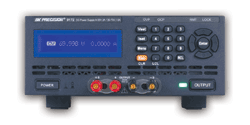
Fig. 5: The 9172 dual-range programmable power supply with automatic range selection.
Multi-range supplies are different in that they recalculate voltage/current limits for each setting, forming a constant power hyperbolic shaped boundary (see Fig 6 ). The 100-W/60-V/5-A-rated model 9110 is an example of this type of supply; any voltage/current combinations that lie on the hyperbolic curve are possible. In each case, the supply operates at maximum power.
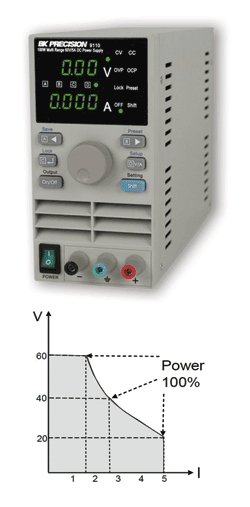
Fig. 6: The curve at bottom shows the continuous range of settings combinations possible for maximum power, a capability of the model 9110 at top:
The benefits of this architecture are clear: A multi range supply offers greater flexibility in output ratings and allows users to substitute several fixed rating with a single multi-range supply, thus saving cost and bench space.
Advertisement
Learn more about B&K Precision





